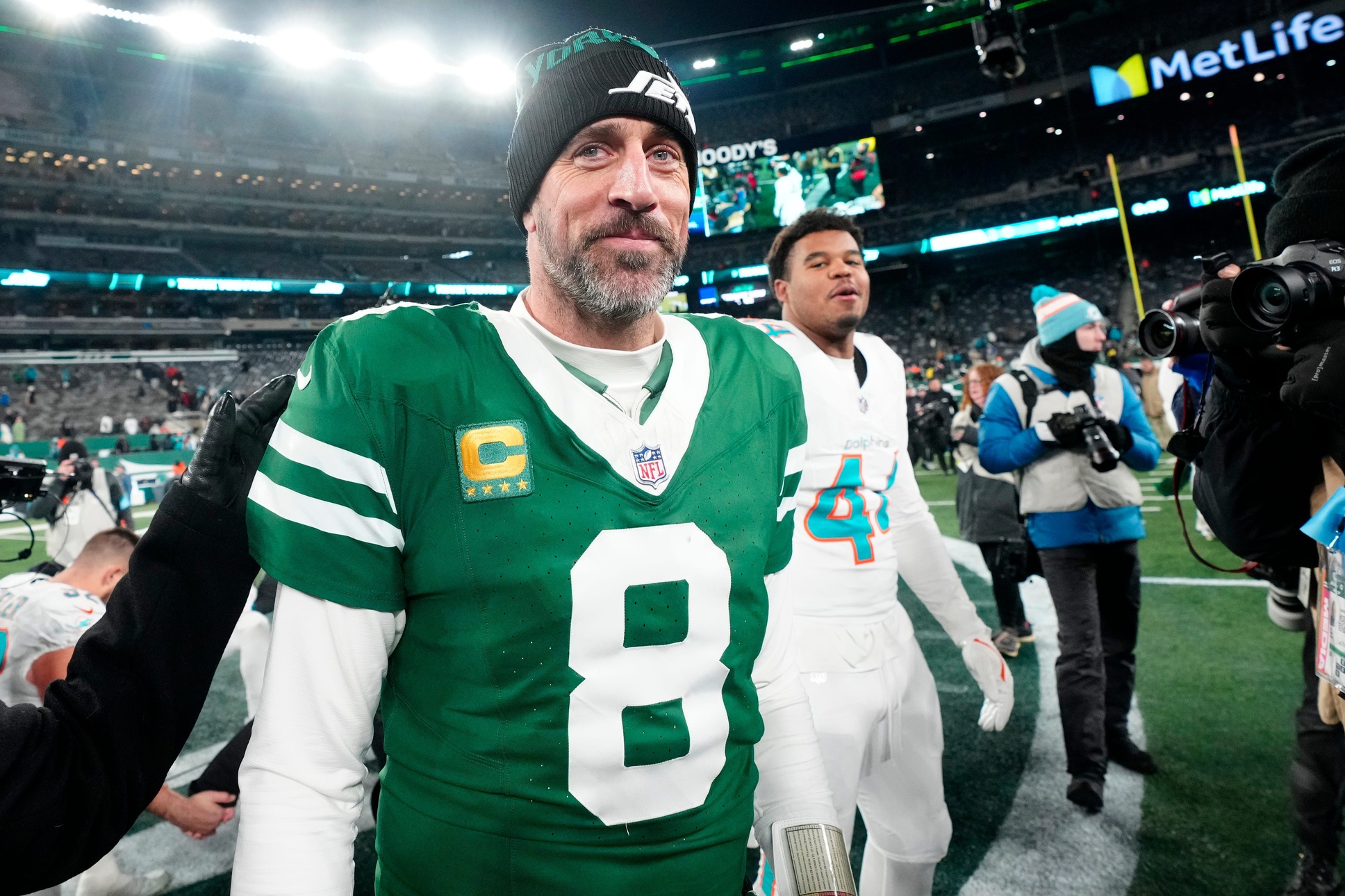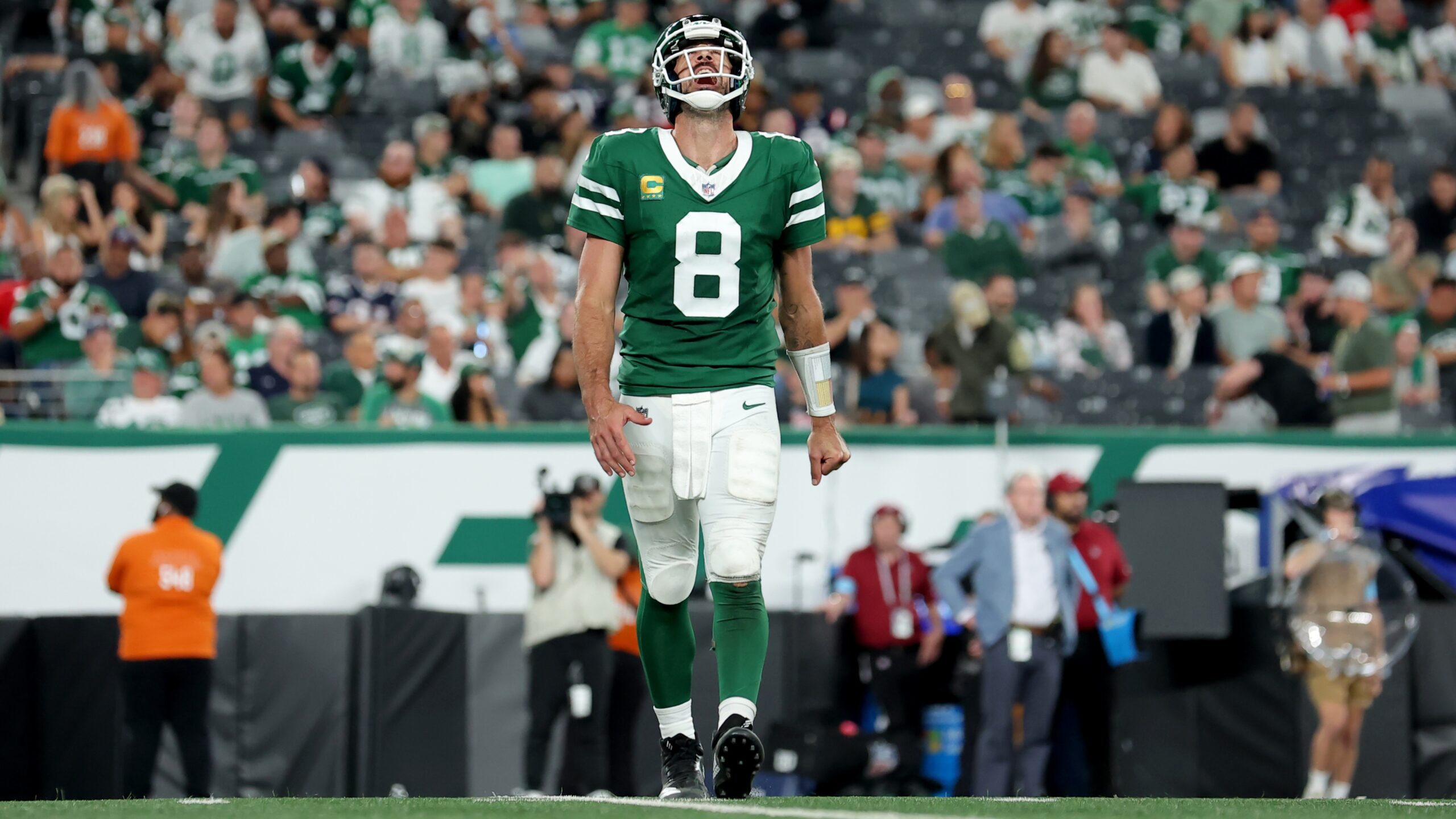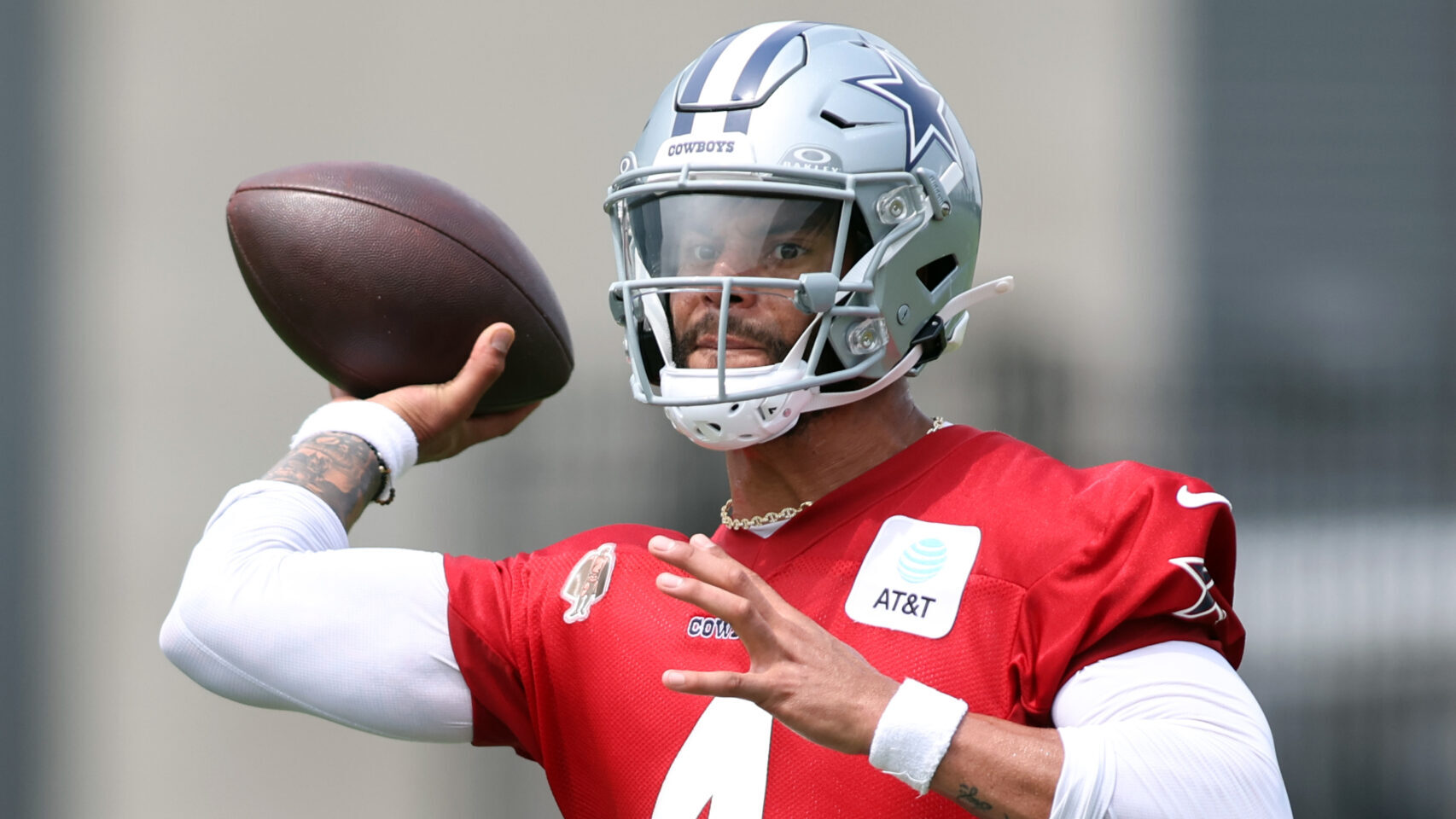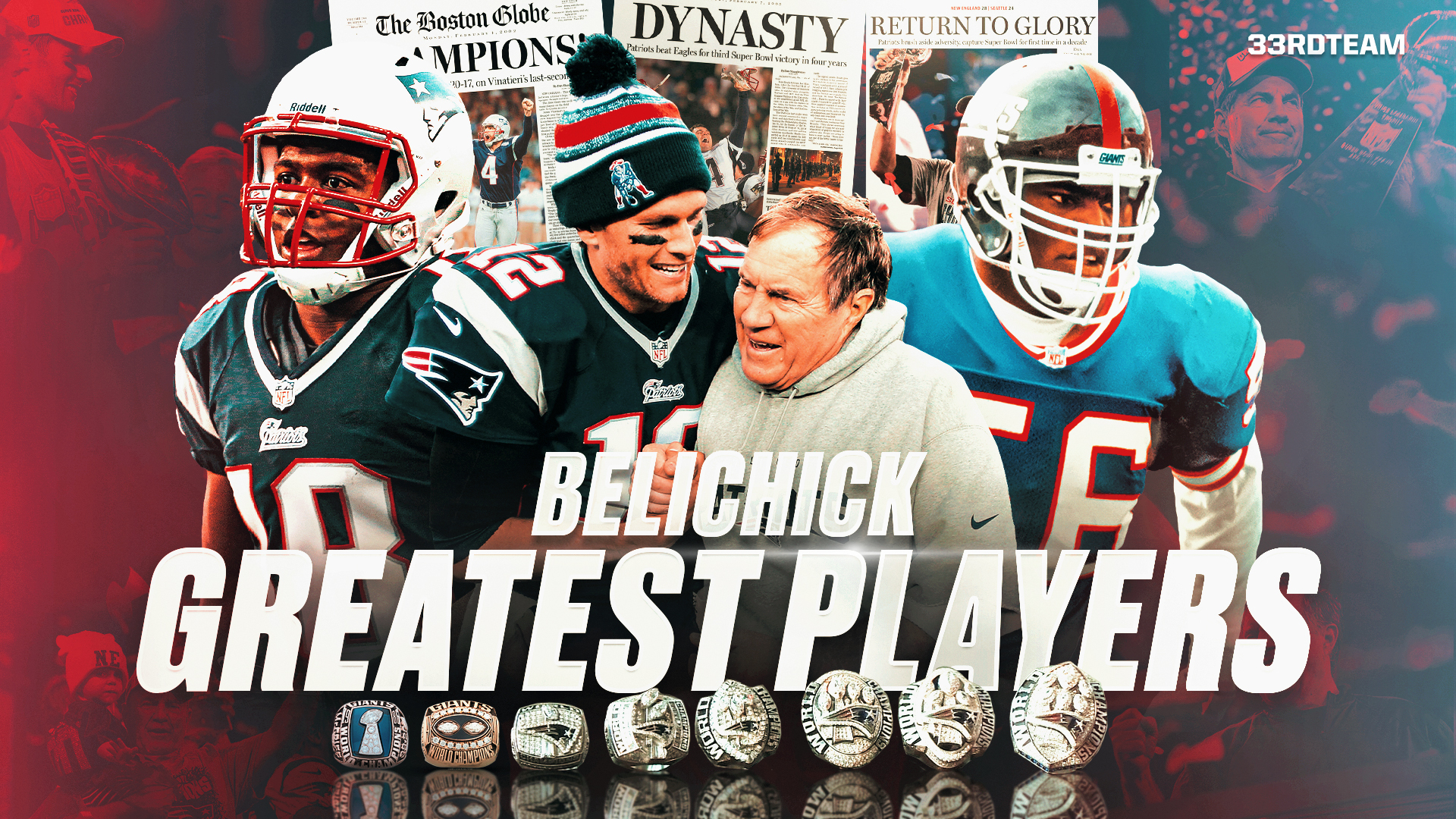Analysis
11/3/21
15 min read
Will the Rams Ever Have to Use a First Round Pick Again?
With the Rams recent trade for Von Miller that again cements their strategy of exchanging top picks for veteran talent, we’ve decided to republish our July 2021 study on their strategy.
On April 29th, 2021, the first round of the 86th NFL Draft saw 32 prospects find new homes. Through the obvious picks in Trevor Lawrence and Zach Wilson to the surprises like Alex Leatherwood and Joe Tryon, the Los Angeles Rams were not to be found. In fact, they are currently slated to go seven years without a first-round selection, the third-longest such streak in NFL history, and show no signs of stopping anytime soon. Does their plan have any merit? Will this strategy automatically lead to an unbalanced roster? How long can they really keep this going?
This week, The 33rd Team takes a deep dive into the brainchild of Rams GM Les Snead and HC Sean McVay to find whether they can build a dynasty without the opportunity to get generational talents like Derrick Henry, Jamal Adams, Patrick Mahomes, and A.J. Brown on rookie contracts.
The Overall Plan
After graduating from Auburn in 1993, Les Snead worked his way up the NFL ladder in Jacksonville and Atlanta before finally getting his first shot at running a team in 2012 for the then-St. Louis Rams. Selected by newly-hired St. Louis HC Jeff Fisher, the pair faced the tall task of improving a squad that had gone only 15-65 in the past five seasons. Snead wasted no time with his first big decision, trading away the second overall pick in the 2012 NFL Draft and giving up the chance to select RGIII. Although the team improved on the field, Fisher’s Rams still were unable to put together a cogent offense, averaging a ranking of 24th for points scored. With seven different starting QBs over Fisher’s tenure, Snead saw firsthand how important a convincing passer was to his planning and continued to churn the position between players like Sam Bradford, Austin Davis, and Shaun Hill before amassing the capital to acquire a rookie Jared Goff.
Quarterback was not the only position that the team struggled to hold on to, watching three different offensive coordinators run the offense as well as another three defensive coordinators, all in five seasons. Perhaps unsurprisingly, they were still unable to manage a winning season in the next five campaigns and Fisher was let go in favor of the league’s youngest head coach since 1938, Sean McVay.
While McVay’s 2017 arrival coincided with the disappearance of first-round selections in Inglewood, it’s a misconception to think that McVay has been the primary driver of their roster planning because Snead’s roster moves have always hinted at this outcome. The Rams were involved in every major trade at certain positions, sending a combined three firsts, three seconds, three thirds, two fifths, two sevenths, and Sam Bradford for Jared Goff, Tavon Austin, Nick Foles, Case Keenum, and Brandon Lloyd.
Even though Goff and Austin were as-yet-unseen rookies at the time, the strategy of aggressively targeting players at key positions was set. Including the McVay era, the Les Snead Rams have consistently looked to trade for quarterbacks, wide receivers, and cornerbacks above all else. They are still liable to trade key capital for a lineman like Austin Corbett or Dante Fowler, but the priority is clear. When McVay showed his explosive potential in 2017, the team rapidly looked to prop open their championship window by acquiring capable veterans.
Historical Comparisons
Despite the extensive media attention, the Rams aren’t the first NFL team to eschew early-round draft picks with such frequency or even the only team doing so currently. 19 other units have used two or fewer first round selections over a five-year span, including the current Texans and Chiefs.
However, extending the time period quickly starts reducing the contenders to only the serious teams, not just the ones who frequently trade down out of the first round. Most notably, Washington put together an astounding 24-year run between 1968 and 1991 that included only 5 first round selections. Primarily behind coaches George Allen and Joe Gibbs, Washington recorded a 62.92% win rate and three Super Bowl championships.
Two other Super Bowl-era teams have put together similar runs with few first-round picks, specifically the 1975-1984 49ers and the 1993-2000 Chargers. The former bridged the gap between the Dick Nolan and Bill Walsh days as the team picked up mid-round stalwarts like Roger Craig, Eric Wright, Dwight Clark, and Joe Montana. Although the team wasn’t strong over this stretch, it clearly set them up for a dynastic run.
The Chargers, on the other hand, saw their team degrade from a Super Bowl contender to a 1-15 team that Eli Manning refused to play for. What was their downfall? Poor drafting. Their best draft pick over that stretch never played a down for the team (Trent Green) and they otherwise drafted only two Pro Bowl players over 8 years despite 67 total selections (Rodney Harrison and Natrone Means).
With such few relevant long-term examples, we can turn to the NBA to examine a pair of basketball examples. Although all of the usual disclaimers about the increased importance of the NBA Draft and a single player being more able to turn a basketball franchise around apply, the general strategic concepts can be instructive.
The most recent example is the 2013 Brooklyn Nets trade for Kevin Garnett, Paul Pierce, and Jason Terry. Sending away three first-round picks and a pick swap, the Nets had both Pierce and Garnett for only a single season, losing in the second round of the playoffs. This trade continues to haunt them, as they managed only 23 wins per season from 2016-2018 because they had no draft picks to replenish their roster.
A bit farther back, the 1993 Golden State Warriors sent four total first-round selections for the rights to first overall selection Chris Webber. Although they made the playoffs with a 50-32 record and Webber won Rookie of the Year, he feuded with the coaching staff and didn’t return to the team the next season. It was 13 seasons before they returned to the playoffs.
The Numbers Behind the Gambit
Targeting a few key positions through trades, the Rams have consistently valued outside veterans as more valuable than their first-round selections but still accumulate large volumes of picks through trading down.
Despite not selecting earlier than 44th overall since 2017, the Rams have still made 8+ picks each year, particularly through a distributive strategy that sees picks spread fairly evenly throughout the draft before taking more shots in later rounds. It’s these later rounds where they’ve truly extracted the most value, with the league’s 8th-most drafted Approximate Value (AV) weighted by draft capital from Day 3 selections since 2017, including the 6th-best results in rounds 4-5 and 13th in rounds 6-7.
With players like Samson Ebukam, Sebastian Joseph, David Edwards, and Josh Reynolds making 10+ starts for the team, the Rams have managed to get high-quality contributions from their later selections and seem to have stolen another contributor in 2020’s Jordan Fuller.
Although they’ve gotten some larger-name players from Day 2 in Cooper Kupp, John Johnson, and Gerald Everett, the Rams rank only 19th for Day 2 drafted AV weighted by draft capital, meaning that they haven’t gotten as much production from those selections as the rest of the NFL.
What about their overall roster construction? We can compare their 2020 roster to the four conference championship participants (Buffalo, Kansas City, Green Bay, and Tampa Bay) to look at how exactly they differ. The Rams slightly lead that group with 47.54% of their roster drafted by the team, and rank fourth with 31.15% UDFAs. What about actual games started by drafted players in 2020?
Here, Los Angeles’ 62.78% of games started falls slightly behind Tampa Bay’s 64.49%, but this is still a highly impressive result when considering that LA has had to use lower-round picks yet is still getting starters. Furthermore, the Rams have drafted 54.42% of their cumulative AV, good for third among the conference finalists. Interestingly, 18.14% of this AV is instead from UDFAs, just barely behind Kansas City for second place.
The final two draft-based numbers in this group concern the rounds of these players. First, LA is comfortably in first with 72.42% of their home-grown draft picks coming from the third round or later, yet still have gotten outsized production from their few remaining home-grown first-round picks (specifically Aaron Donald, Jared Goff, and Michael Brockers). 30.08% of their 2020 AV was from this trio, beaten only by Buffalo’s 44.76%. With both Goff and Brockers traded to Detroit this offseason, this number will surely fall moving forward but continue to put pressure on the remaining high-pedigree Rams.
Since 2017, the Rams have gone 43-21, tied for fourth in the NFL with New England and finishing every season above 0.500. In their three playoff appearances, they’ve finished an even 3-3 and are one of only six teams to make a Super Bowl appearance over that span. Even more, the Rams have had both a top-ranked offense and a top-ranked defense in only four years, something the franchise hasn’t accomplished since 1974.
Potential Cracks in the Armor
A key driver of the Rams' success has been their overwhelming health.
FootballOutsiders calculates yearly totals of Adjusted Games Lost, specifically calculating how many games a team misses due to injury and then weighting that by how important the player is to the team (starters vs. rotational players) as well as a credit for players who compete while injured.
It is unknown whether the Rams have taken a designated, differentiated approach to player health, but they have been shockingly effective at keeping their players on the field. They’ve been one of the top-ten healthiest teams each year of the McVay era, with their 2019 playoff-missing season the only time they even ranked outside of the top five.
It’s very possible that LA has simply been lucky in terms of injuries, but each new healthy season that they put together increases the chances that they are truly doing something different to preserve their players. The moderate outlier year of 2019 is worrying, however, given how significantly their output fell with even moderate injuries. Their offensive ranking dropped almost 10 spots from the year prior, while their defensive ranking was a full 16 places lower than what they would accomplish only a year later.
From a salary cap standpoint, escalating costs of the veterans will increasingly require the team to replace their core players or sacrifice mid-tier veterans to keep them. After several rounds of contract restructures in the 2021 offseason, LA is left with the 4th-most dead cap ($31.4 million) and a 2022 roster that is already $11.01M over the cap, also fourth-most.
Of their ten top cap hits in 2021, only CB Darious Williams sees his deal expire while most of the others either leap significantly in expense or will look for longer-term extensions. Les Snead hasn’t prioritized extending players before the final year of their deals, and the bill is coming due. LT Andrew Whitworth and QB Matthew Stafford are notable pieces of the salary cap and roster management puzzle here, as moving on (or a retirement) from either would save $14.67M or $23.00M respectively, but the long-term answer isn’t on the roster.
At the NFL’s two most expensive positions, the Rams lack the first-round picks to replace either of these players and will be forced to again settle for mid-round picks, trade acquisitions, or moderately-priced free agents.
It is particularly damning that the team hasn’t drafted an OT in either of the past two drafts despite owning 18 selections, instead stocking up with multiple receivers, linebackers, defensive linemen, and defensive backs. A 2020 pick was also spent on Sam Sloman, a kicker who lasted all of seven games with the team. With recent big-money extensions for WRs Robert Woods and Cooper Kupp as well as the third-highest special teams cap hit, the roster risks becoming a collection of talent rather than a cohesive team.
Their star-focused roster also puts their eggs in relatively few baskets, so to speak. Several of the positions they’ve decided to value lack depth and could be especially vulnerable to injury. Although backup QB John Wolford did pick up a Week 17 win last season, the Rams will certainly hope that starter Matt Stafford doesn’t get hurt. In seasons where he missed a game over his career in Detroit, Stafford-less teams had a win rate over ten percentage points lower.
Cornerback is another of those more top-heavy positions, with starters Jalen Ramsey and Darious Williams lacking any experienced backups. Although a pair of third-years in David Long and Kareem Orr are on the roster, neither has played significant defensive snaps. 2021 fourth-round selection Robert Rochell could be the eventual answer but the coaching staff should expect the Central Arkansas product to need some time to adjust to the much quicker NFL game.
For his own part, Ramsey has missed a total of 5 games over the past two seasons, and his team has gone only 2-3 without him compared to a 16-11 record with Ramsey on the field. Finally, the TE position hasn’t been replenished since Gerald Everett left in free agency, with only former UDFA Johnny Mundt bringing any career catches to the group behind Tyler Higbee.
Sean McVay’s scheme still uses a majority of 11 personnel, but he’s significantly increased his usage of 12 personnel over the past two seasons. Without a capable second TE and rarely utilizing no-TE packages, the Rams are especially endangered by a potential injury to Tyler Higbee.
What Needs to Go Right to Continue Their Success?
Despite the potential problems described above, the Rams are still a strong team that has a lot of pieces in place to contend for the foreseeable future. With a talented and cohesive personnel and coaching staff as well as Aaron Donald, LA should be a factor in playoff conversations for years to come. Since Sean McVay’s arrival, the team has consistently ranked in the top third of the league for scoring along with a rapidly improving defense that allowed 30+ points only twice last season.
We’ve discussed their injury “luck” so far, as well as their strong drafting. With their star pieces in place, simply continuing to find serviceable starters in the later rounds of the draft will be enough to maintain their current level of performance. Unearthing above-average starters or even a late superstar can vault the Rams into Super Bowl contention once more.
Continuing to find talent on the coaching staff is another key point. McVay’s immediate impact shows the huge importance coaching has on this roster, but his ability to bring in high-level coordinators and assistants can’t be understated.
With coaches like Matt LaFleur, Wade Phillips, Zac Taylor, Shane Waldron, Kevin O’Connell, and Brandon Staley, LA has become a coaching hotbed that will continue to get snatched away for coordinator roles elsewhere.
Although McVay himself will likely stay as long as ownership lets him, he needs to continue recruiting high-level staff each year in order to remain competitive on both sides of the ball. Of course, this is true to some degree for every team, but it is especially vital for the Rams due to the vast number of late round draft picks that they need to get production and starts from. Failing to develop their draft picks carries the same price as making bad selections outright.
Regardless, they need to figure out their long-term solution at quarterback and LT. Finding a successor to Andrew Whitworth is key due to the 40-year-old’s increasing contract and 2020 torn MCL. Furthermore, this entire strategy depends on having a QB in place because good passers rarely change teams and the lack of draft capital prevents you from drafting them.
By acquiring Stafford, the Rams gave up on turning around Jared Goff but also put a time limit on deciding for their future strategy. While the 27-year-old Goff had three years remaining on his deal, Stafford is 33 and will enter the final year of his deal in 2022.
Unless another high-pedigree passer enters the market, Los Angeles is almost forced to commit to Stafford long-term. Although whispers continue about Aaron Rodgers-caliber quarterbacks being available, the reality is that 94 veteran QBs have been traded since 2000, with the most successful being Matt Hasselbeck, Trent Green, Alex Smith, and Ryan Tannehill.
It’s unknown whether Matthew Stafford will fall more in line with this group or the Sam Bradford, Josh Rosen, or late-career Trent Dilfer demographic, but the team is counting on him to be the answer.
While other teams have loaded up on high-value draft picks, the Rams have zagged and decided to own the trade market. With comparatively fewer teams willing to part with first-round picks, the Rams can certainly extract more value in big-ticket trades but now stand the test of maintaining a deep enough roster to support their stars.
By continuing to find starters in the later rounds of the draft, retaining highly-capable coaches, and by avoiding a few specific injuries, Snead and McVay can put themselves in position to hunt down the McVay family record of three Super Bowl championships.
By Peter Engler, Bryan Filker, and Brian Friedland







